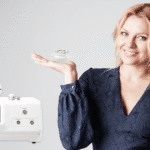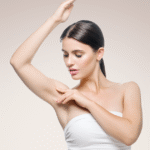Acne may fade, but its scars can stick around, creating lasting frustration. These scars, especially deep ones like boxcar or ice pick scars, can be difficult to treat with creams or serums. Fortunately, laser therapy fades scars, offering an advanced solution and restoring smoother skin.
The Battle with Acne Scars: Why They Stick Around
Acne scars form when the skin heals poorly after inflammation from severe acne. Some scars are shallow and easy to treat, but others, like boxcar or ice pick scars, penetrate deep into the skin. These deeper scars are harder to address because they involve more than just surface-level damage. The skin’s collagen production, which helps repair and regenerate, isn’t enough to smooth things out naturally. As a result, scars stick around, creating uneven skin texture and leaving people feeling self-conscious. This is where laser therapy comes in—offering a way to help smooth those scars for good.
How Laser Therapy Fades Scars
Laser therapy uses concentrated light energy to target scar tissue. This energy penetrates deep into the skin, stimulating the body’s healing response and encouraging collagen production. As collagen remodels, new skin forms and fills in scarred areas, leading to smoother skin.
The Best Laser Types for Acne Scars
There are two primary categories of lasers used to treat acne scars: ablative and non-ablative. Ablative lasers remove the damaged outer skin layers, while non-ablative lasers work beneath the surface to stimulate collagen production without affecting the top layer. Both methods are effective in improving acne scars, depending on the extent of the scarring.
Specific laser types are better suited for different scar types. For example, CO2 lasers, a strong ablative option, are perfect for deeper scars. These lasers carefully remove thin layers of skin to reduce the depth of pitted scars and smooth raised ones.
For those who prefer quicker recovery, fractional lasers, such as Fraxel, focus on small areas of the skin, leaving the surrounding skin untouched, which helps speed up the healing process. Meanwhile, pulsed-dye lasers are ideal for reducing redness and discoloration by targeting blood vessels, improving the overall appearance of the scars.
Why Laser Therapy is a Game-Changer for Scar Treatment
Laser therapy offers a level of precision that topical treatments can’t match. By penetrating deeper layers of the skin, lasers address the root of the problem—damaged tissue and collagen. Results are long-lasting, and improvements are often visible after just a few treatments.
Laser therapy is also highly customizable, allowing it to be tailored to each individual’s skin type and scar condition. Whether your scars are mild or severe, laser treatments can be adjusted to meet your unique needs, making it a versatile option for many patients.
Achieving Smooth Skin: Recovery and Results
After laser treatment, the skin may be red and slightly swollen, but recovery time depends on the type of laser used. Non-ablative lasers require little to no downtime, while ablative lasers may need a week or two for full recovery.
Post-treatment care is crucial. Avoid sun exposure, keep the skin hydrated, and follow your dermatologist’s advice for optimal healing. Over time, your skin will smooth out, and acne scars will gradually fade.
Laser therapy provides a reliable, lasting solution for those tired of battling acne scars. With its ability to stimulate collagen and remodel scar tissue, it’s truly a secret weapon in achieving clear, smooth skin.








